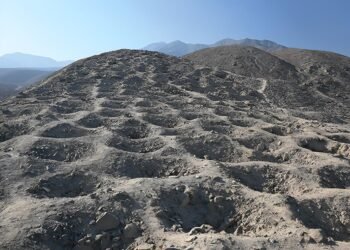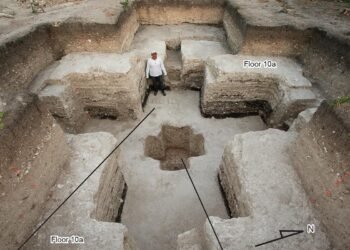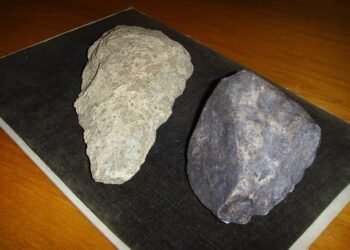Workers at a coal quarry in a small Serbian village have unearthed the ancient remains of a Roman ship. This well-preserved vessel, believed to date back to the 3rd or 4th century CE, was found in Drmno, near Kostolac, when an excavator unearthed timber buried under layers of silt approximately 25 feet below the surface.

Subsequent pieces revealed a nearly 42-foot-long flat-bottomed vessel that archaeologists from Viminacium, a former Roman settlement and naval base nearby, rushed to preserve.
The ship’s historical significance lies in its potential role as a vital link between Viminacium and the Danube River. Experts speculate that this ancient vessel may have been part of a larger river fleet that serviced Viminacium—a bustling Roman city with a population of around 45,000 people during its prime. The city was a key trading hub in the Roman Empire, boasting an array of amenities, including a palace, forum, amphitheater, temples, baths, and aqueducts.
Archaeologists believe that this ship could have been used for towing cargo from the shore or propelled by oars. In favorable conditions, it might have even employed an auxiliary sail for wind-powered movement. However, precise details of its function remain to be uncovered.
Radiocarbon dating results are awaited to ascertain the ship’s age definitively, although it is believed to hail from Viminacium’s heyday, representing a pivotal trading hub in the Roman Empire and the largest settlement in the Balkans.
Viminacium, once a thriving Roman city, had a tumultuous history. It was first destroyed in 441 by Attila the Hun but rebuilt during the 6th century by Emperor Justinian I. Unfortunately, in 582, it met its second downfall at the hands of the invading Avars and was never repopulated.
However, the site has been a treasure trove of archaeological finds since its first excavation in 1882. These discoveries include silver and gold artifacts, tombs, frescoes, a gladiator arena, and the remains of approximately 20 mammoths.
The latest addition to this impressive roster of finds is the recently unearthed Roman ship, which will soon join thousands of other artifacts from Viminacium on display at Kostolac.
However, preserving and moving the ship is a complex task. The archaeologists will require a specially designed structure and the assistance of a crane to safely transport it. The ship’s preservation process will be meticulous, ensuring that it remains intact for generations to come.
This discovery bears resemblance to another incident in 2020 when Serbian miners inadvertently unearthed the remains of three ships in the same area. Those vessels were unfortunately damaged during the excavation, with approximately 35 to 40 percent of one ship sustaining harm.
Nevertheless, the archaeological team managed to collect all the parts and aims to reconstruct it as fully as possible. These ships raised numerous questions about their history, with one possibility being that they were either abandoned or intentionally sunk, potentially as a protective measure during the barbarian invasion and the withdrawal of Roman troops.
Despite over a century of excavations, archaeologists estimate that they have explored merely 5 percent of the vast site, which covers an area larger than New York’s Central Park. The site’s unique aspect is that it remains unburied beneath a modern city, preserving its archaeological potential.
At its zenith, Viminacium played a pivotal role as a trading hub and regional center within the Roman Empire. With an estimated population of 45,000 people, it stood as one of the largest settlements in the Balkans. The city featured a wealth of attractions, including a hippodrome, fortifications, a palace, temples, an amphitheater, aqueducts, baths, and workshops. Its history, marked by destruction and rebirth, offers information on the Roman Empire’s frontier.






















